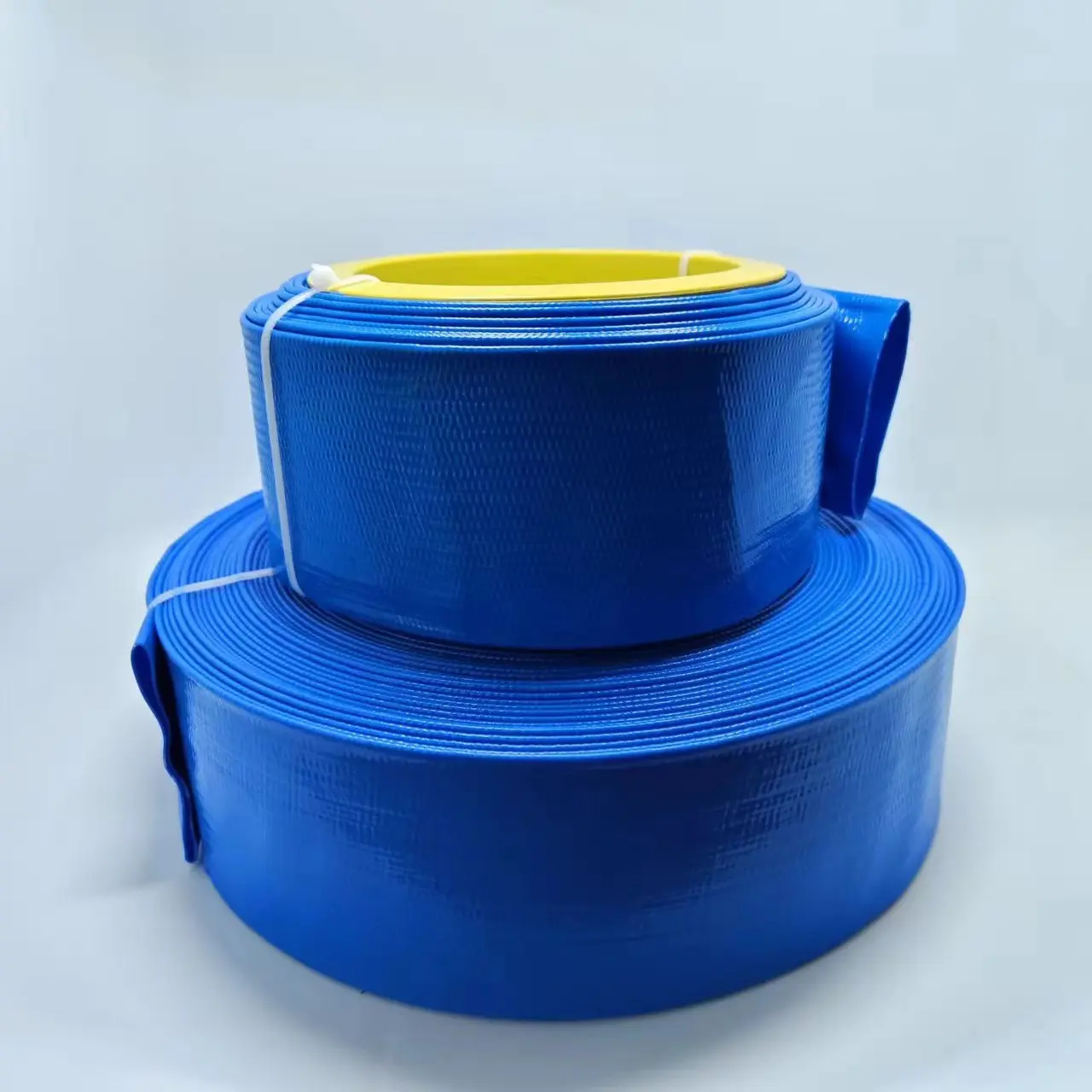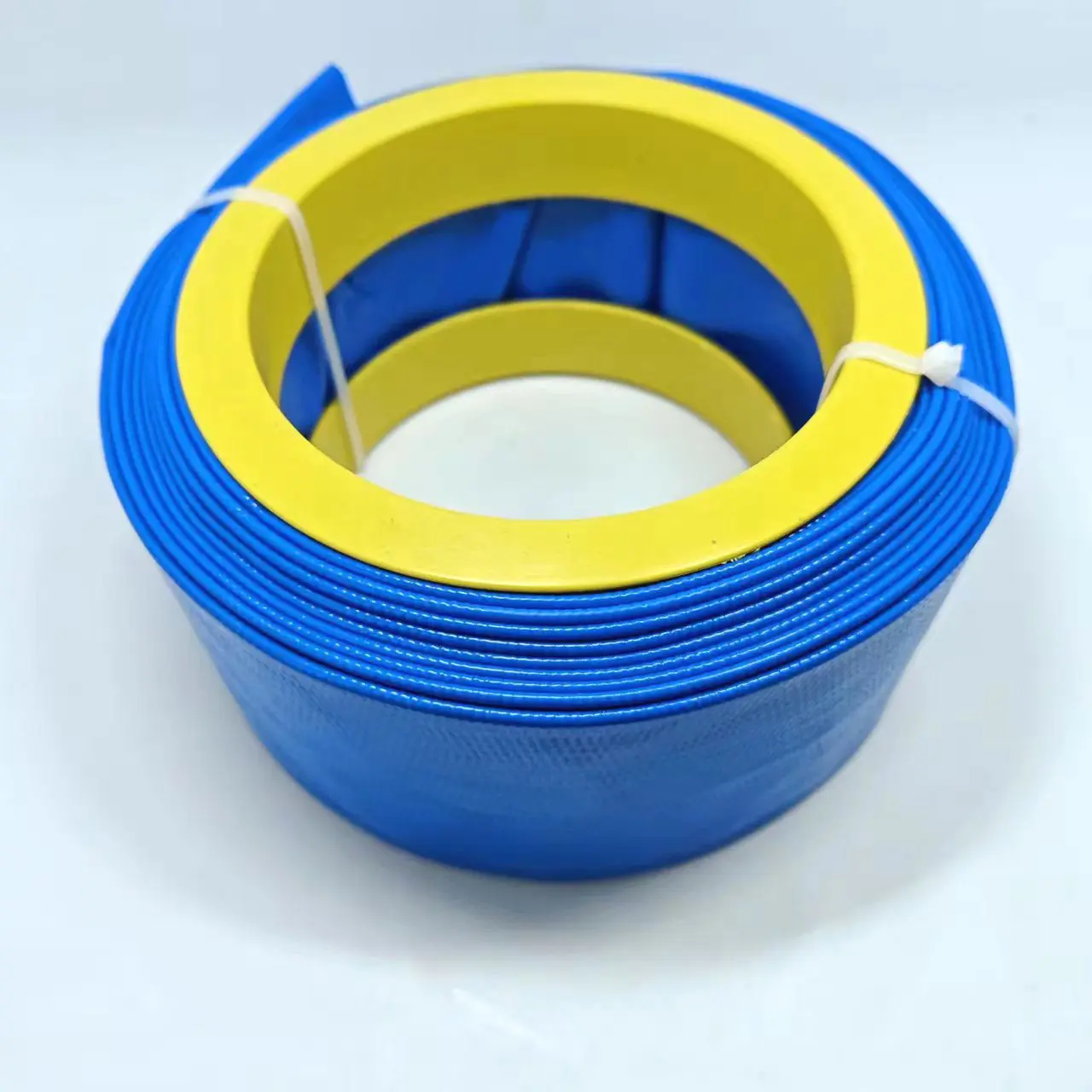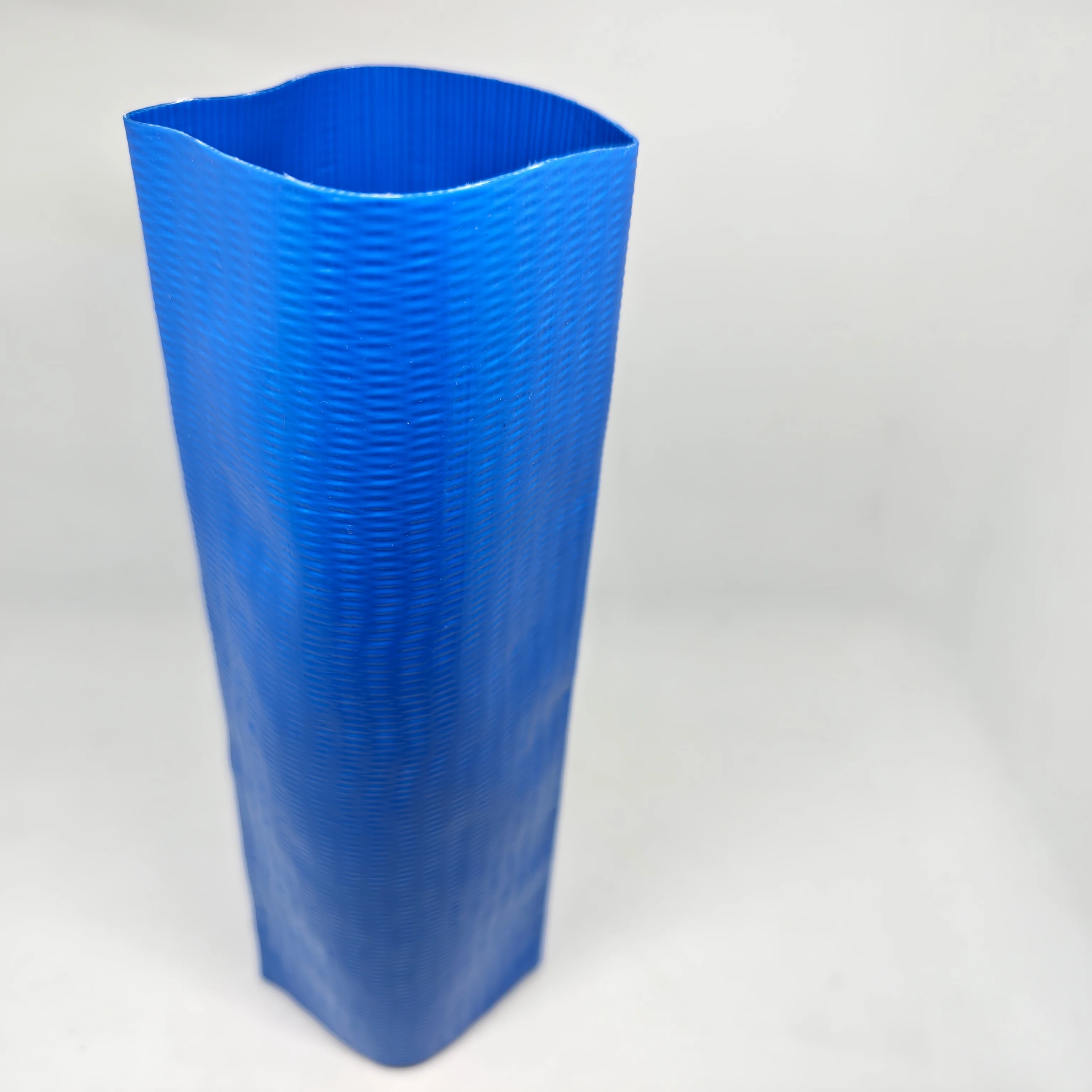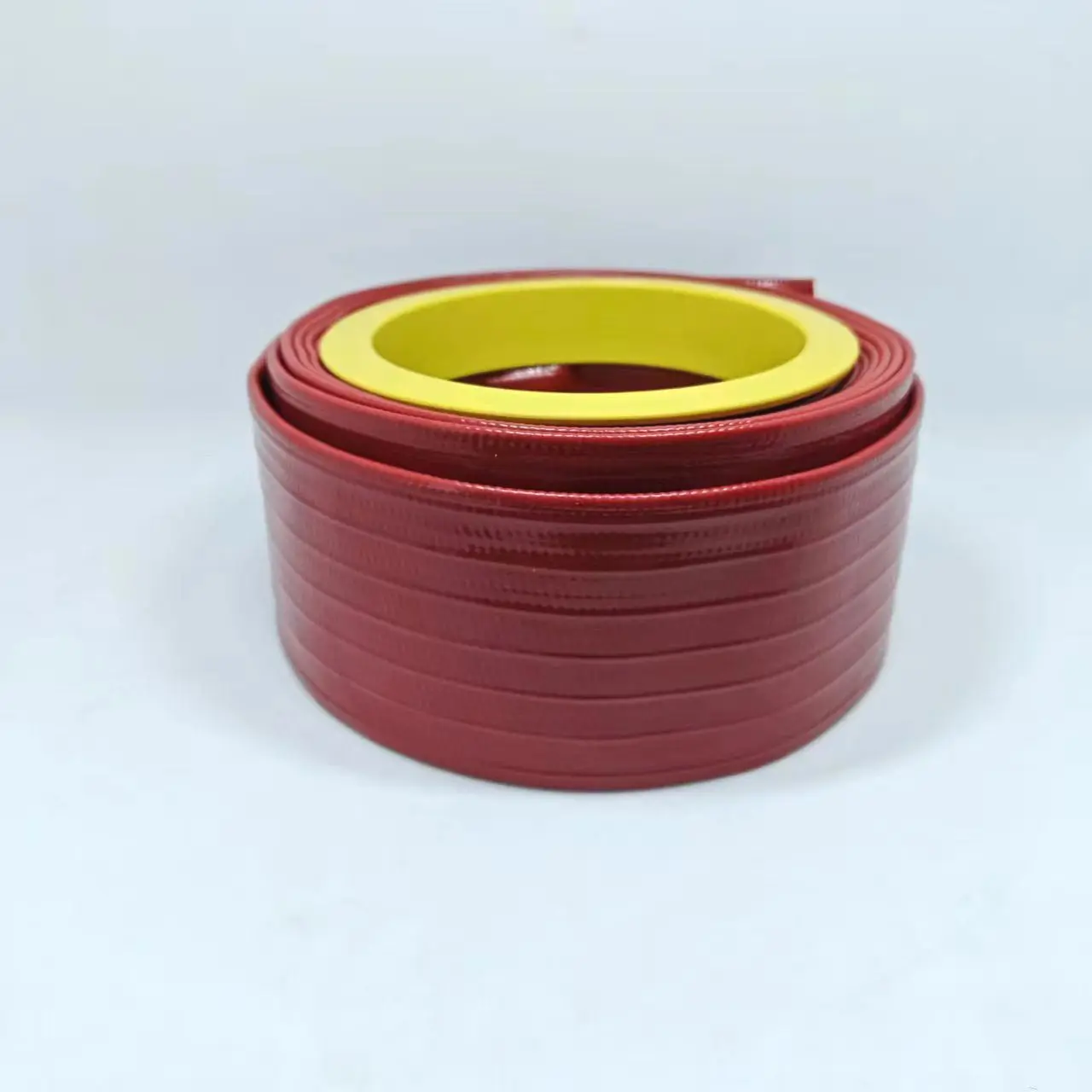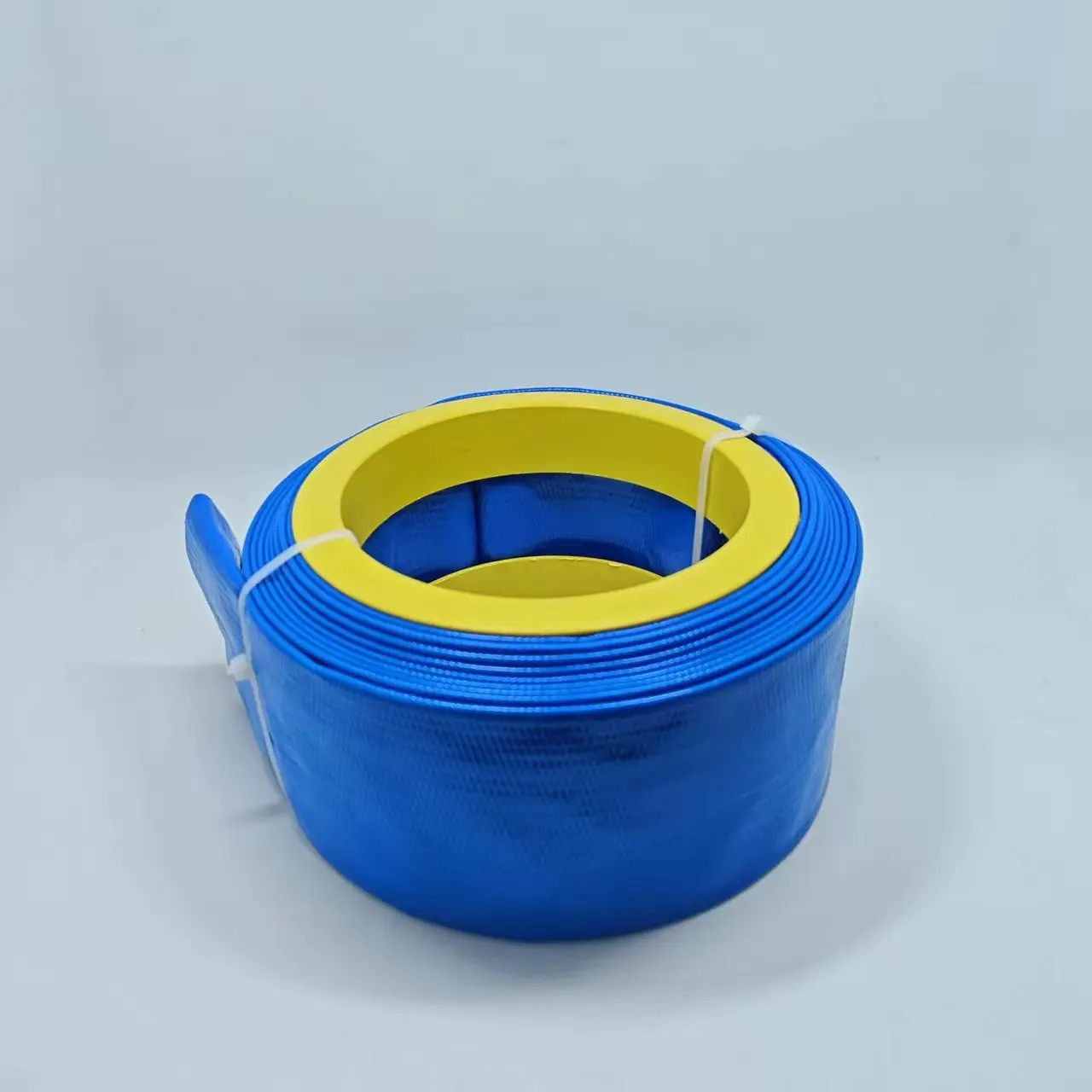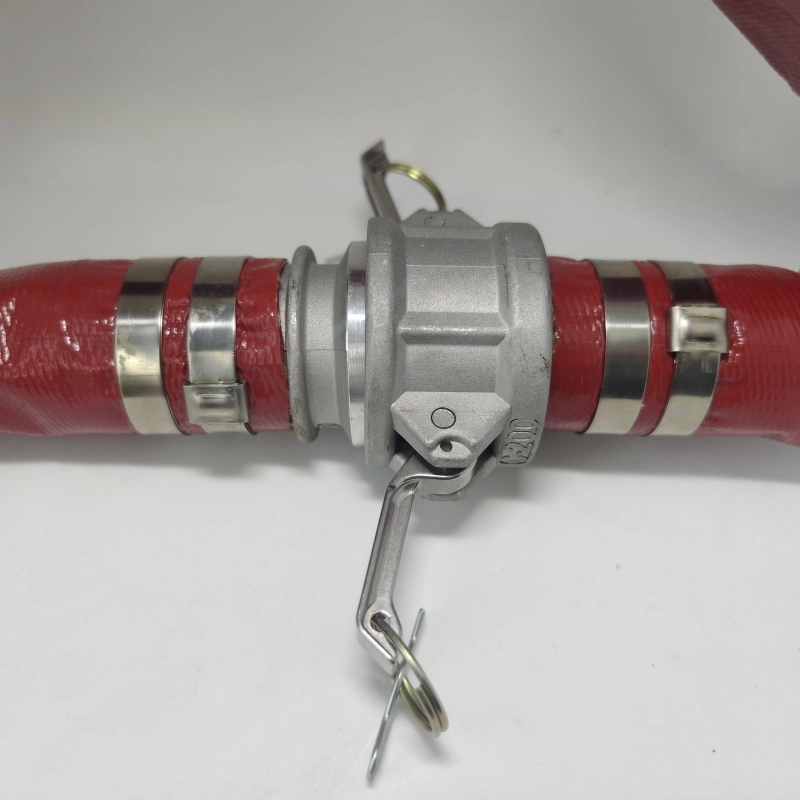In industrial drainage, agricultural irrigation, firefighting emergencies, and construction sites, you may often notice a distinctive blue flat hose - this is the Blue PVC Layflat Discharge Hose with Camlock Couplings we're examining today. This specialized drainage hose has become indispensable in liquid transfer applications due to its unique structure and performance characteristics. This guide will provide a complete understanding of this product's features, manufacturing process, quality comparisons, and selection tips.
Part 1: Product Fundamentals
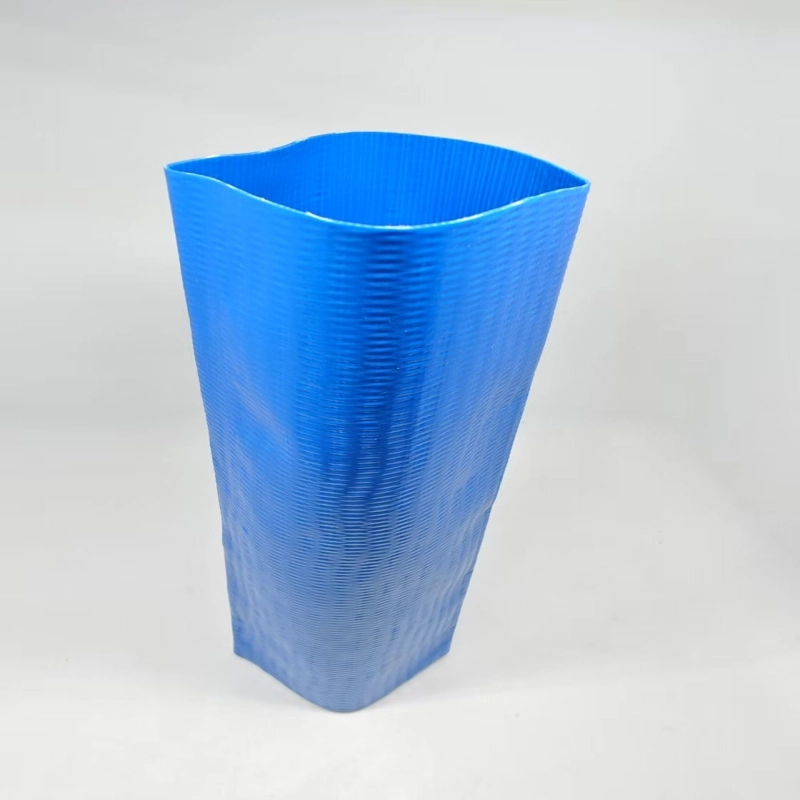
1. What is a Blue PVC Layflat Discharge Hose?
A blue PVC layflat discharge hose is a collapsible flat hose made from polyvinyl chloride (PVC) material that assumes a cylindrical shape when filled with liquid and flattens for storage when emptied. Equipped with Camlock quick-connect couplings (a tool-free connection system), it becomes a highly efficient liquid transfer solution.
Key Features:
High visibility: Standard blue color for easy identification
Space-saving: Flattens for compact storage when empty
Rapid deployment: Camlock couplings enable second-fast connections
Durability: Special PVC formulation enhances service life
2. Why Blue Color?
Blue holds special significance in industrial fluid transfer:
Industry standard: Internationally recognized for non-potable water transfer
Safety marking: High contrast with surroundings reduces tripping hazards
UV protection: Blue pigments typically contain UV stabilizers
Psychological impact: Blue conveys reliability and professionalism
Interesting fact: Different colors indicate different uses - red for firefighting, green for irrigation, while blue is standard for industrial drainage.
Part 2: Technical Specifications
1. Basic Specifications
| Parameter | Specification Range | Notes |
|---|---|---|
| Diameter | 2"-12" (50-300mm) | 4"-6" most common |
| Working Pressure | 4-10 bar | Depends on diameter |
| Burst Pressure | 12-30 bar | 3:1 safety factor |
| Temperature Range | -10°C to +60°C | Avoid freezing |
| Standard Lengths | 15m/30m/50m | Customizable |
| Bend Radius | 5× diameter | Avoid sharp bends in use |
| Weight | 0.5-3kg/m | Varies by diameter/thickness |
2. Camlock Coupling Specifications
| Parameter | Specification |
|---|---|
| Material | Aluminum alloy/Stainless steel/Polypropylene |
| Type | Type A (Female)/Type B (Male) |
| Sealing | O-ring (NBR/FKM) |
| Working Pressure | Up to 10 bar |
| Connection Time | <10 seconds |
| Corrosion Resistance | 500-hour salt spray test |
3. Performance Comparison
| Test Item | Standard Requirement | Premium Product Performance |
|---|---|---|
| Tensile Strength | ≥15MPa | 18-22MPa |
| Tear Resistance | ≥40N/mm | 50-60N/mm |
| Abrasion Resistance | 500 cycles no breach | 1000+ cycles |
| UV Stability | 500 hours no brittleness | 1000 hours remains flexible |
| Cold Flexibility | No cracks at -10°C | Flexible at -20°C |
Part 3: Advantages and Limitations
Advantages (Pros)
1.Space Efficiency
Thickness when empty is 1/5 of filled state
100m of 6" hose rolls to ~80cm diameter
2.Rapid Deployment
Camlock connects 10× faster than flanges
3-person team can lay 200m line in 15 minutes
3.Cost Effectiveness
Priced at 1/3 of rubber hoses
Service life reaches 5-8 years (normal use)
4.Easy Maintenance
Smooth surface resists dirt accumulation
Localized damage easily repaired
5.Versatility
Handles water, wastewater, slurry
Suitable for both suction and discharge
Limitations (Cons)
1.Temperature Limits
Prolonged high temps (>60°C) cause softening
Low temps (< -10°C) may cause brittleness
2.Chemical Compatibility
Not resistant to strong acids/bases (pH<3 or >11)
Organic solvents cause swelling
3.Mechanical Strength
Lower pressure rating than metal pipes
Vulnerable to sharp objects
4.UV Degradation
Prolonged sunlight reduces lifespan (even with blue UV protection)
5Fouling Issues
Wastewater can cause interior buildup
Requires periodic backflushing
Part 4: Quality Comparison Guide
Premium vs Economy Product Comparison
| Comparison | Premium Hose | Economy Hose |
|---|---|---|
| Material | Virgin PVC+polyester reinforcement | Recycled material+cheap fibers |
| Thickness | Uniform | Irregular |
| Color | Consistent deep blue | Fading/discoloration |
| Seam | HF welded seamless | Visible adhesive marks |
| Pressure Rating | 30% above rating | Barely meets standards |
| Flexibility | Remains flexible when cold | Hardens in cold |
| Abrasion Resistance | Meets DIN53516 | Rapid wear |
| Odor | Mild plastic smell | Strong chemical odor |
| Certifications | ISO/CE/UL etc. | None |
| Warranty | Typically 2-5 years | None or months only |
Real case: A construction site using budget hoses experienced multiple bursts within 3 months. After switching to premium hoses, they've operated 2+ years without failure.
Part 5: Manufacturing Process
1. Raw Material Preparation
PVC compound: Base resin+plasticizers+stabilizers+blue masterbatch
Reinforcement: High-tenacity polyester yarn (warp+weft)
Camlock couplings: Aluminum cast or injection molded
2. Production Process
Hose Manufacturing:
Extrusion: PVC melted into dual-layer film
Reinforcement weaving: Polyester yarn cross-woven at 45°
HF welding: Edges sealed to form tube
UV treatment: Surface coated with UV protection
Coupling Production:
Casting: Aluminum alloy melted and cast
Precision machining: Lathe machining sealing surfaces
Surface treatment: Anodizing or zinc plating
Assembly testing: O-ring installation and pressure testing
3. Quality Control Points
Material inspection: PVC resin K-value (optimal 67-68)
Weave density: 16-20 yarns per inch
Weld strength: ≥90% of base material strength
Color fastness: ΔE<3 after 500h QUV test

Part 6: Purchasing Guide
1. Needs Assessment "5 Questions"
What medium will it transfer? (Water/wastewater/chemicals)
Required working pressure? (Choose 30% above need)
Operating environment? (Indoor/outdoor/extreme temps)
Connection requirements? (Standardize Camlock type)
Frequency of movement? (Higher mobility needs better abrasion resistance)
2. On-Site Inspection "5 Steps"
Visual: Uniform color, no impurities, even weave pattern
Tactile: Smooth interior/exterior, uniform thickness, no burrs
Olfactory: No strong odor (low-quality PVC often smells)
Flex: No white marks when folded (material toughness test)
Pull: Minimal radial deformation (reinforcement quality)
3. Cost-Effectiveness Formula
Total Cost of Ownership = (Purchase price/service life) + maintenance costs
Example:
PVC Layflat hose A: $100/m, 3-year life, $10 annual maintenance → (100/3)+10=$43.3/year
PVC Layflat hose B: $150/m, 6-year life, $5 annual maintenance → (150/6)+5=$30/year
4. Brand Selection Advice
International brands: Alfagomma, Continental (30-50% premium)
Quality domestic: Renato flex, Jiaolong (best value)
Avoid: Products without manufacturer info or test reports
Part 7: Usage and Maintenance
1. Installation "3 Musts"
Keep straight: Avoid twisting during installation
Support properly: Provide support every 5-10m
Align correctly: Fully insert Camlock before rotating to lock
2. Usage Precautions
Pressure control: Avoid sudden pressure surges
Temperature management: Bleed air before moving in extreme temps
Chemical compatibility: Test unknown liquids first
Mechanical protection: Use edge guards when crossing sharp surfaces
3. Maintenance Methods
Cleaning: Flush interior after use
Drying: Hang to dry when empty (avoid folded storage)
Inspection: Check coupling O-rings monthly
Repair: Use PVC repair kits for small holes
4. Troubleshooting Guide
| Issue | Possible Cause | Solution |
|---|---|---|
| Leaky coupling | Worn O-ring | Replace seal (keep common sizes) |
| Bulging hose | Localized reinforcement break | Cut and reinstall coupling |
| Reduced flow | Interior fouling | Chemical/mechanical cleaning |
| Surface cracks | UV degradation | Apply waterproof tape |
Conclusion: Smart Selection Maximizes Value
The blue PVC layflat discharge hose, as an essential tool in modern industrial fluid transfer, demonstrates value not just in purchase price but more importantly in operational efficiency and reliability. Through this comprehensive guide, you should now understand:
Key indicators of genuine quality products
The engineering rationale behind blue coloring
Practical techniques to extend service life
How to make optimal cost-performance purchases
Remember: The most suitable is the best - by matching product specifications and quality levels to your specific application scenarios, usage frequency, and budget, you can maximize the value of this efficient drainage solution.
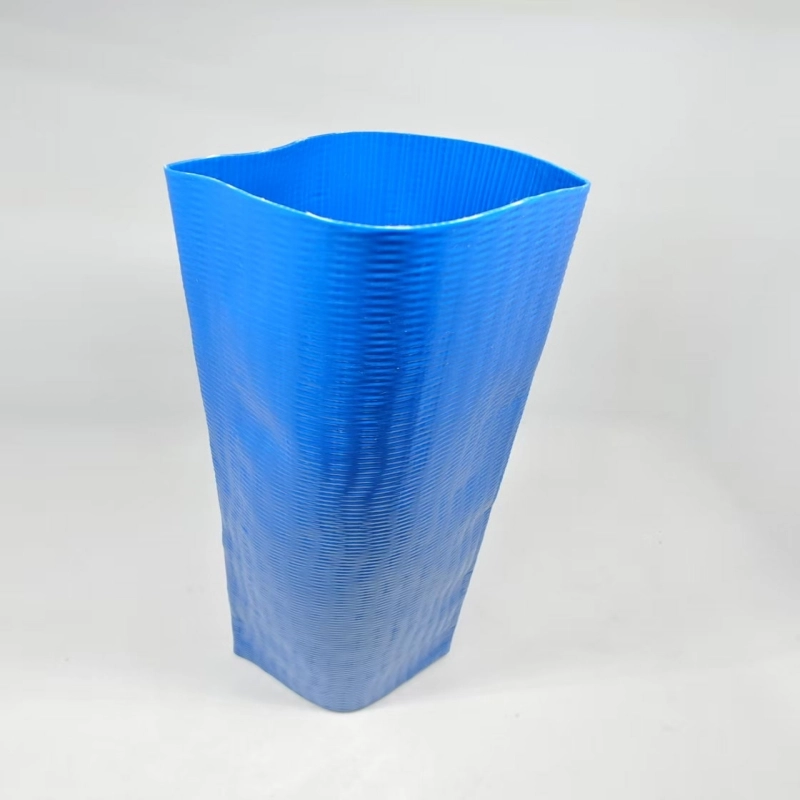
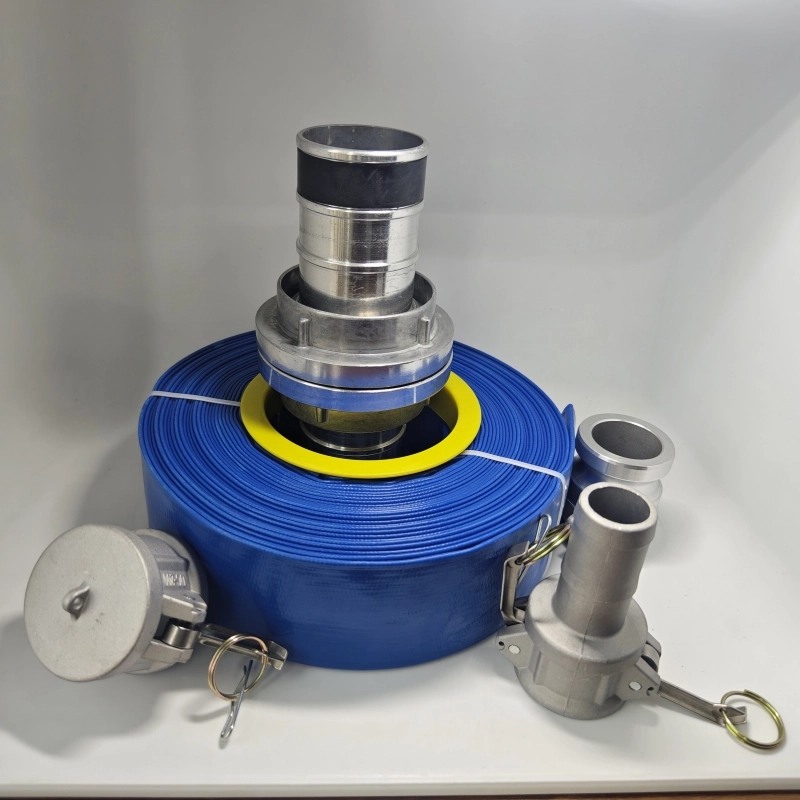
142.webp)
